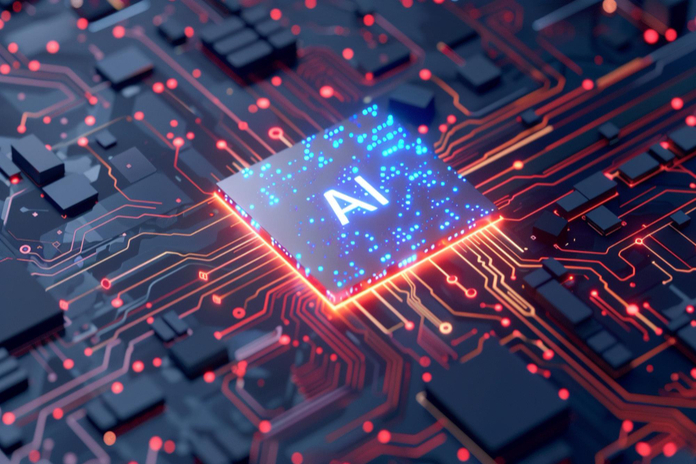The AI revolution, once heralded as the next big thing in technology, is now under increased scrutiny as companies assess the return on their substantial investments. Nvidia (NASDAQ:NVDA) has been at the forefront of this movement, benefiting immensely from the demand for AI hardware. However, as other Big Tech companies pour billions into AI, questions about the actual returns on these investments are beginning to surface. This AI investment scrutiny highlights a growing disconnect between the high expectations for AI and the more modest returns many companies are experiencing.
Nvidia’s Strong Position in the AI Market
Nvidia’s role in the AI boom cannot be overstated. The company’s hardware, particularly its graphics processing units, is integral to the functioning of many AI applications. This reliance on Nvidia’s technology has driven the company’s revenue up by an impressive 122%, underscoring its dominance in the AI hardware market. During Nvidia’s recent earnings call, however, CEO Jensen Huang faced tough questions from analysts about the broader industry’s AI spending and the speculative nature of its returns.
While Nvidia’s financials remain robust, not every tech company is seeing the same level of success. Nvidia’s hardware may be thriving, but for many others, the path to profitable AI ventures is less clear. The challenge lies in translating AI’s potential into actual, tangible returns—a task that has proven more difficult than some had anticipated.
The Growing Scrutiny of AI Spending
The scrutiny over AI investment has been growing, especially as companies like OpenAI reach astronomical valuations. OpenAI, the company behind ChatGPT, was recently reported to be in fundraising talks that could value it at over $100 billion. This valuation, comparable to established giants like Starbucks (NASDAQ:SBUX) and BP (NYSE:BP), has fueled excitement but also skepticism. Critics argue that such financial enthusiasm might not accurately reflect the viability of AI technologies, especially when the broader industry struggles with consistent returns.
Nvidia’s recent earnings report, which met expectations but didn’t exceed them as dramatically as in previous quarters, further highlights the complex landscape of AI investment. Despite this, the appetite for AI remains strong, with Big Tech CEOs continuing to invest heavily in AI technologies. However, this ongoing commitment raises questions about whether the industry is heading towards a recalibration of expectations rather than a complete paradigm shift.
The Mismatch Between AI Hardware and Software
One of the significant challenges in the AI space is the mismatch between the success of AI hardware providers like Nvidia and the slower progress of AI software development. While Nvidia’s chips are in high demand, the software that relies on these chips is still in the early stages of proving its value. This disconnect has led to a situation where companies are heavily investing in AI infrastructure without yet seeing the corresponding returns from AI applications.
As tech companies increasingly align their identities and spending with AI, the pressure to demonstrate returns is mounting. Nvidia’s success story is heavily reliant on the AI aspirations of these tech platforms, but if the software side doesn’t catch up, the entire industry could face a significant reckoning.
Investor Concerns and the Future of AI Spending
Investors are beginning to voice concerns about the tangible returns from AI investments. The fear is that if these returns don’t materialize soon, there could be a scale-back in spending that would hurt companies like Nvidia. However, for the time being, Big Tech appears committed to betting big on AI, with companies continuing to invest in the hope that AI will eventually fulfill its promise.
The uneven earnings season across the tech world raises important questions: Is this a buying opportunity for those confident in AI’s long-term potential, or is it a signal that a more cautious approach to AI spending is warranted? As the industry moves forward, the balance between optimism and realism will be critical in determining the future of AI investments.
Conclusion: Navigating AI’s Uncertain Future
As AI investment scrutiny intensifies, companies like Nvidia stand out for their immediate successes, while others in the tech industry grapple with slower returns. The ongoing commitment to AI by Big Tech suggests that the belief in AI’s transformative potential remains strong, but the reality of delivering on that potential is proving to be more complex. As the industry continues to evolve, the coming years will be crucial in determining whether AI will live up to its hype or require a recalibration of expectations.
Featured Image: Freepik









